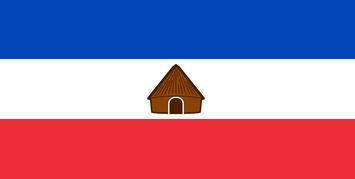
The
State of
Southern Nations, Nationalities and Peoples

The State of Southern Nations, Nationalities and Peoples' comprises 10% of the total area of the country, that is administratively divided in to 9 zones, 72 woredas and 5 special woredas. There are a total of 77 woredas and 149 towns in the State. The rural part of the State had 3804 farmers' association at the time of the 1994 census.
CAPITAL CITY
The capital city of the State is Awassa.
LOCATION
The State lies in the southern part of the country. It has common borders with Kenya in the south, the Republic of the Sudan in the South west, the State of Gambella Peoples' in the North west, and the State of Oromiya in the North and East.
AREA
According to the CSA (Central Statistics Authority) annual statistical report, the State has an estimated area of about 112,323.19 sq. kms.
POPULATION
According to the 1994 census report, the total population size of the State is 10,377,028 of which 5,161,787 were males and 5,215,241 females. The rural population of the State accounts for 93.2% of the total population. North Omo, Sidama, and Guragie are the three zones with the highest number of population. The population is concentrated mostly in eastern, northern and central part of the State while the western and southern part of the State is sparsely populated.
Multi-ethnic groups that add to more than forty five indigenous ethnic groups characterize the state. According to the 1994 census result, the predominantly spoken languages include, Sidamigna 18%, Gruagigna 14.72%, Wolayitagna 11.53%, Hadiyigna 8.53%, Keffigna 5.22%, and Kembatigna 4.35%. Other languages spoken in the State are, Gamoigna, Malo, Goffa, Gedeo and many others. The working language of the state is Amharic.
MAJOR ECONOMIC ACTIVITIES
Coffee is the most important cash crop. Other major crops of the region include maize, teff, enset, potato, and wheat.
TOPOGRAPHY AND CLIMATE
The State has an undulating land feature dissected by the Omo river basin into western and eastern parts. The elevation ranges form 376 to 4, 207 meter above sea level. The lowest area and highest peaks in the State is recorded near Lake Rudolf in South Omo and at Mount Goge in North Omo, respectively. About 56 % of the total area of the State are found below 1,500 meters elevation, which is categorized largely as hottest low land ("Kolla"). The rest 44% is found in the temperate climatic zone.
The mean annual rainfall of the State ranges from 500 - 2,200 mm. Its intensity, duration and amount increases from South to Northeast and Northwest. The mean annual temperature of the State in general ranges form 15°C to 30°C.
RIVERS AND LAKES
Many pernnial and seasonal rivers are found in this State. These include, Omo, Gojeb, Mago, Segen, Woito, Akobo, Dima, Wabi, Wolga, Bilate, and Genale. River Omo stands amongst the largest.
Among the known Rift Valley lakes are Awassa, Abaya, Chamo, Chew Bahir and Rudolf.
LIVESTOCK
According to the CSA (Central statistical Authority) 1989 E.C. statistics, there were 5,779,000 sheep & cattle, 2,136,300 goats, 210,900 horses, 39,000 mules, 160,000 donkeys, 7,023,000 chicken and 607,900 hives in the region.
FAUNA
There are 23 kinds of wild animals and 300 species of birds. Some of the wild animals found in this State are Elephant, Lion, Giraffe, Leopard, Zebra, Monkey, Lesser kudu, Water Buck, Corocodile, Rhinoceros, Warthogs, and Buffalo.
NATURAL RESOURCES AND MINERALS
The State is rich in natural resources. These include, water, mineral, fauna and flora. Some of the minerals of the region include gold, coal, mineral water, clay, ditomite, scoria, limestone, mica, nickel, iron-ore, and asbestos.
The water resource can be utilized for fishery, irrigation and hydroelectric development. There are seven preserved forest locations. Forests and bushes cover around 18% of the state.
TOURISM
Some of the major tourist attractions of the State are lakes like Awassa, Abaya and Chamo. Tropical forests such as Kaffecho, Shekecho and Omo zones are wonderful places. The Nechsar, Mago and Omo national parks are found in this state. These national parks are centers of tourist attractions.
INVESTMENT
The State has established an investment office that promotes the state's conducive and encouraging environment for investment. From 1991 to the end of 1998 575 licenses have been given to investors. The total capital amounts to 1.94 billion Birr. These projects will create an employment opportunity for 64, 557 skilled and non-skilled employees.